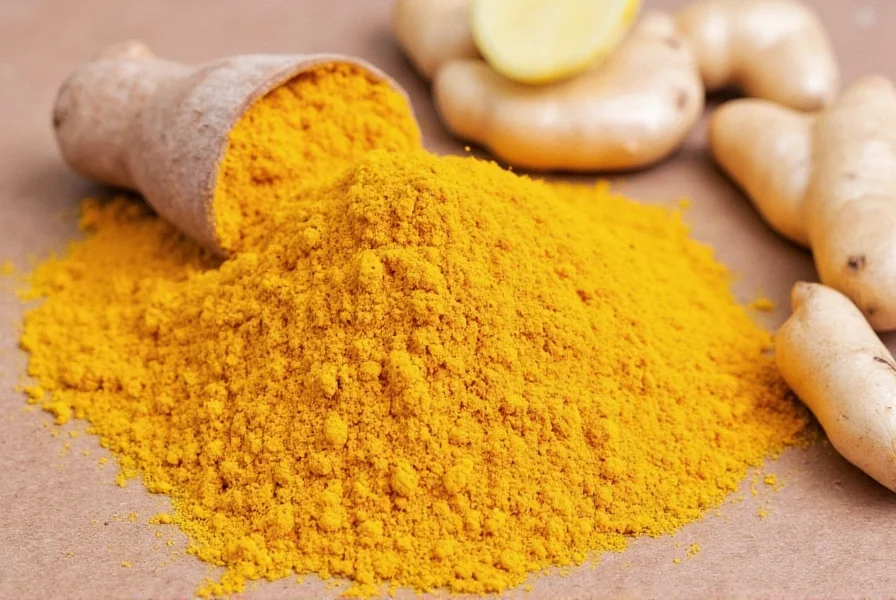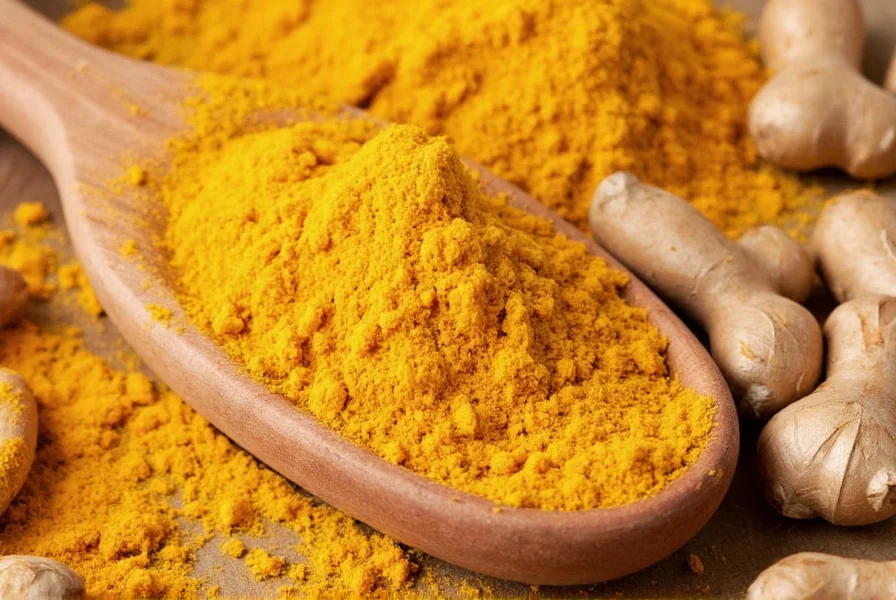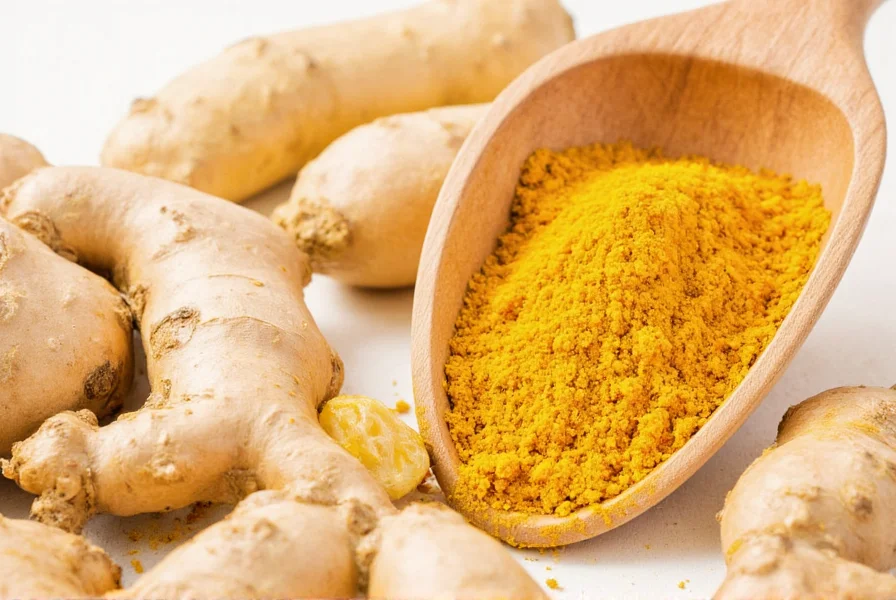For centuries, turmeric and ginger have been staples in traditional medicine systems across Asia. Modern science now validates many of these ancient uses while revealing new therapeutic potentials. This comprehensive guide examines the evidence-based health benefits of these powerful spices, how they work individually and together, and practical ways to incorporate them into your wellness routine.
The Science Behind Turmeric's Health Benefits
Turmeric (Curcuma longa), the golden spice central to curry blends, contains curcumin as its primary active compound. Curcumin represents just 2-8% of turmeric by weight but delivers most of the spice's therapeutic effects. Research published in the Journal of Medicinal Food confirms curcumin's potent anti-inflammatory properties, which operate through multiple biochemical pathways.
Unlike pharmaceutical anti-inflammatories that target single pathways, curcumin modulates numerous inflammatory molecules including NF-kB, cytokines, and enzymes like COX-2. This multi-target approach explains why turmeric benefits extend across various health conditions:
- Joint health: A 2016 study in Clinical Interventions in Aging found turmeric extract as effective as ibuprofen for reducing osteoarthritis pain
- Brain function: Research in American Journal of Geriatric Psychiatry shows curcumin may delay cognitive decline by reducing brain inflammation
- Heart health: Turmeric improves endothelial function, which regulates blood pressure according to Nutrition Journal
- Mood support: Several trials indicate curcumin may alleviate symptoms of depression
However, curcumin has notoriously poor bioavailability. Consuming turmeric with black pepper (containing piperine) increases absorption by up to 2,000%, making this combination essential for experiencing turmeric and ginger benefits effectively.

Ginger's Proven Therapeutic Properties
Ginger (Zingiber officinale) contains gingerols and shogaols as its primary bioactive compounds. These substances give ginger its characteristic pungency while delivering significant health benefits. Unlike turmeric, ginger demonstrates excellent natural bioavailability, making its effects more immediately accessible.
Ginger benefits have been extensively studied for digestive health. A comprehensive review in Nutrients confirms ginger's effectiveness against various forms of nausea including morning sickness, chemotherapy-induced nausea, and motion sickness. The mechanism involves ginger's ability to accelerate gastric emptying and modulate serotonin receptors.
Additional research-validated ginger benefits include:
- Muscle recovery: Consuming 2 grams of ginger daily reduces exercise-induced muscle pain by 25% according to The Journal of Pain
- Blood sugar regulation: Studies show ginger supplementation lowers fasting blood sugar and HbA1c levels
- Digestive support: Ginger stimulates digestive enzymes and reduces bloating
- Anti-nausea effects: Particularly effective for pregnancy-related nausea without pharmaceutical side effects
Synergistic Effects of Turmeric and Ginger Combined
When combined, turmeric and ginger create complementary health effects that exceed their individual benefits. This synergy operates through several mechanisms:
| Mechanism | Turmeric Contribution | Ginger Contribution | Combined Effect |
|---|---|---|---|
| Anti-inflammatory action | Targets NF-kB pathway | Modulates COX-2 enzymes | Broad-spectrum inflammation reduction |
| Antioxidant capacity | Neutralizes free radicals | Boosts glutathione production | Enhanced cellular protection |
| Bioavailability | Poor absorption alone | Improves circulation | Ginger enhances curcumin uptake |
| Digestive support | Moderate effect | Strong effect | Comprehensive digestive aid |
Traditional medicine systems like Ayurveda and Traditional Chinese Medicine have long combined these spices for enhanced therapeutic effects. Modern research validates this practice, showing that the combination provides broader protection against oxidative stress and inflammation than either spice alone.
Practical Applications and Dosage Guidelines
Understanding how to effectively incorporate turmeric and ginger into your routine maximizes their health benefits. Here's what the research suggests for optimal usage:
Daily Dosage Recommendations
- Turmeric: 500-2,000 mg of curcumin daily, always with black pepper (containing piperine) for absorption
- Ginger: 1-1.5 grams of fresh ginger or 250-1,000 mg of dried ginger powder daily
For acute conditions like nausea or muscle pain, higher ginger doses (up to 4 grams) may be temporarily appropriate. Always consult your healthcare provider before using therapeutic doses, especially if taking blood thinners or managing chronic conditions.
Best Consumption Methods
Maximize turmeric and ginger benefits through these preparation techniques:
- Golden milk: Heat turmeric with coconut milk, black pepper, and a small amount of healthy fat
- Fresh juices: Combine fresh ginger and turmeric root with citrus for enhanced absorption
- Cooking: Add to stir-fries, soups, and sauces (heat improves curcumin solubility)
- Supplements: Choose standardized extracts with bioavailability enhancers

What the Research Really Tells Us
While both spices show impressive potential, it's crucial to maintain realistic expectations about turmeric and ginger benefits. Most studies use concentrated extracts rather than culinary amounts. The anti-inflammatory effects are significant but generally milder than pharmaceutical options.
Research limitations include:
- Many human studies use small sample sizes
- Long-term effects beyond 6-12 months aren't well documented
- Optimal dosing varies significantly between individuals
- Quality of supplements varies widely in the marketplace
That said, the safety profile of both spices is excellent at culinary doses. The National Center for Complementary and Integrative Health considers them generally safe, with ginger potentially causing mild heartburn and turmeric possibly interacting with blood thinners at high doses.
Conclusion: Integrating Turmeric and Ginger Wisely
Turmeric and ginger represent two of nature's most well-researched medicinal spices. Their anti-inflammatory, antioxidant, and digestive benefits are supported by growing scientific evidence. When used together, they create complementary effects that enhance their individual therapeutic potential.
For best results, incorporate both spices regularly into your diet through cooking, beverages, or quality supplements. Remember that consistent, moderate use delivers better results than occasional high doses. While these spices offer significant health benefits, they work best as part of a comprehensive wellness approach rather than standalone miracle cures.
Frequently Asked Questions
Can turmeric and ginger be taken together safely?
Yes, turmeric and ginger can be safely combined and often enhance each other's benefits. The combination improves curcumin absorption while providing complementary anti-inflammatory effects. At culinary doses (1-3 grams daily of each), they're generally well-tolerated. However, consult your healthcare provider if taking blood thinners or managing gallbladder issues, as high doses might interact with certain medications.
How long does it take to experience turmeric and ginger benefits?
Most people notice digestive benefits from ginger within hours, while turmeric's anti-inflammatory effects typically require consistent use for 4-8 weeks. Research shows measurable reductions in inflammatory markers after 6 weeks of daily curcumin supplementation (500-1,500 mg with black pepper). For chronic conditions like arthritis, maximum benefits may take 8-12 weeks of regular use. Individual responses vary based on metabolism, health status, and dosage.
What's the best way to increase turmeric absorption?
The most effective method to enhance turmeric absorption is combining it with black pepper (containing piperine), which increases curcumin bioavailability by up to 2,000%. Additionally, consuming turmeric with healthy fats (like coconut oil or avocado) improves absorption since curcumin is fat-soluble. Heating turmeric in liquid (as in golden milk) also increases solubility. For supplements, look for formulations with phospholipids or nanoparticles designed to improve bioavailability.
Are there any side effects of consuming turmeric and ginger regularly?
At culinary doses (up to 3 grams daily of each), both spices are generally safe for most people. Potential mild side effects include heartburn, diarrhea, or mouth irritation. High doses of ginger (over 4 grams daily) may cause digestive discomfort, while excessive turmeric could interact with blood thinners. People with gallstones should consult a doctor before high-dose turmeric use. Pregnant women can safely consume ginger in moderation (up to 1 gram daily) for nausea relief, but should discuss turmeric supplementation with their healthcare provider.
Which is better for inflammation: turmeric or ginger?
Both offer anti-inflammatory benefits through different mechanisms, making them complementary rather than competitive. Turmeric (specifically curcumin) provides broader systemic anti-inflammatory effects by targeting multiple inflammatory pathways, making it particularly effective for chronic conditions like arthritis. Ginger works more rapidly on acute inflammation and digestive-related inflammation. For comprehensive inflammation management, using both spices together delivers superior results compared to either alone, as they address inflammation through complementary biochemical pathways.











 浙公网安备
33010002000092号
浙公网安备
33010002000092号 浙B2-20120091-4
浙B2-20120091-4